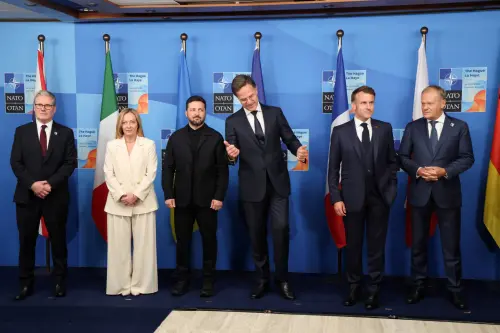The agenda for this week’s meeting of the Group of 20 developed and developing nations is full, but when the leaders of all these countries sit down in Pittsburgh to discuss banking regulation, energy and poverty alleviation, one question will not be on the table – the question of who should be at the table in the first place.
Deciding which nations will sit at the global decision-making table is more politically charged than whether to tie bankers’ bonuses to the risks they take or whether countries can and should stop subsidizing fossil fuel consumption. Resolving which nations will try to forge consensus on these and other critical questions, however, is key to determining whether any resolving actually gets done.
The current G-20 – which in fact consists of roughly 27 countries – came to life when the Bush administration was in a big hurry to address the global financial crisis back in 2008. The previous global leadership forum, the Group of 8 – the United States, Japan, Germany, Great Britain, France, Italy, Canada and Russia – lacked the participation of newly emerging economic powers such as China and Brazil as well as several other major economies such as Saudi Arabia and South Korea. A global crisis requires global participation, and the G-8 was clearly the wrong tool for the job.
Since the G-20 already existed at the ministers’ level, President George W. Bush moved it up a notch to create a new forum. Pittsburgh marks the fourth time this group of leaders has met, but it still operates on an ad hoc basis and the confusion of who attends is undermining confidence in its ability to deliver. The challenge now is to forge a G- grouping that actually works.
The first problem with the current G-20 is that its membership is somewhat arbitrary. It is loosely based on economic weight, but Argentina, whose economy is not in the top 20, attends meetings and Poland, which is in the top 20, does not. If the G-20 were comprised of the actual top economies, then at least extremely time-consuming and distracting squabbles over who is in or out would be minimized. Using objective criteria for membership also has the aura of fairness in determining eligibility.
To increase legitimacy by increasing representation, the Center for American Progress proposed a variation of this idea earlier this year. The plan would take the top two economies from each of five regions of the world and then fill in with the next 10 largest economies. The group could also evolve over time, with membership recalculated every five years to reflect the actual economic and power realities of the moment. That “refresh” makeover would ensure that the group doesn’t quickly become a relic.
Another approach would be to base membership not just on economic weight but also population. One version proposed by the Brookings Institution’s Managing Global Insecurity project, would be to combine economic weight and population in determining the rankings of the top 16 countries.
Both the CAP and Brookings’ approaches allow for the inclusion of important populous countries such as Indonesia, Saudi Arabia, Turkey and Nigeria in addition to the big emerging economic powers that are now in the G-20. This has the potential to make the group’s decisions resonate with a far wider set of countries. That would help ensure greater global compliance with any decisions the leaders of these countries agreed to take.
The difficulty with all of these proposals, as President Barack Obama points out, is how do you explain to the 17th or 21st country that it is not welcome? That’s tough politics.
Hence a third answer is popular these days, which is to have a core of powerful countries act as the new G-grouping and then vary the membership depending on the issue. But if the politics of who’s at the G-20 table are thorny, why repeat them every single time a new meeting is convened? Surely better to take a tough decision once, rather than endlessly renegotiate it.
The choice of a global leaders-level summit grouping involves tradeoffs of important attributes. The new grouping should be broadly representative to maximize its legitimacy, but small enough to be effective. It should tie membership to responsibility, but also serve to shape the choices of less responsible, yet powerful, actors. Ideally it would be inclusive but small, representative but value-based, and legitimate, but effective.
That may simply be an unattainable goal in today’s world. Thus the Obama administration and other governments at the G-20 summit next week need to decide what attributes are most important and then brave the consequences. We believe that the most important balance to strike is between efficiency and buy-in – largely confining the club to those with actual power in the world economy and global security but bringing in a few countries that represent broader regions or groupings of states.
Right now, with the G-8 still active and the G-20 also meeting, the window is open for the Obama administration to develop a consensus around a new grouping of global leaders, or perhaps more than one, that could play a key role in global cooperation for decades to come. If they don’t seize this moment, however, important issues could drift, setting back progress.
If this issue isn’t tackled head on and some degree of stability brought into global decision making, both resentment and uncertainty will rise. That puts at risk the broader strategy that President Obama has outlined of forging broad cooperation on critical issues, such as non-proliferation or the upcoming talks in Copenhagen to forge a global carbon-emissions accord. These are problems that can’t wait for solutions.
The Brookings Institution is committed to quality, independence, and impact.
We are supported by a diverse array of funders. In line with our values and policies, each Brookings publication represents the sole views of its author(s).



Commentary
Op-edDeciding Who Decides at the G-20 Summit
September 24, 2009